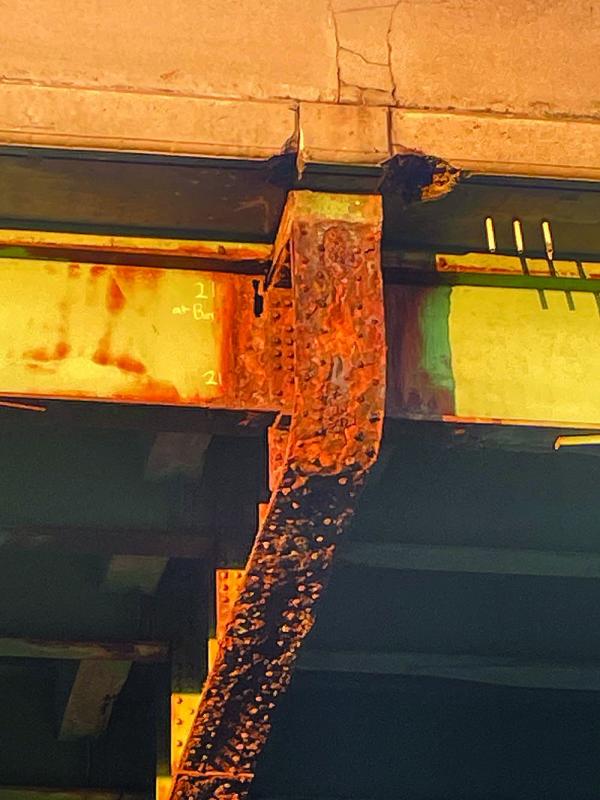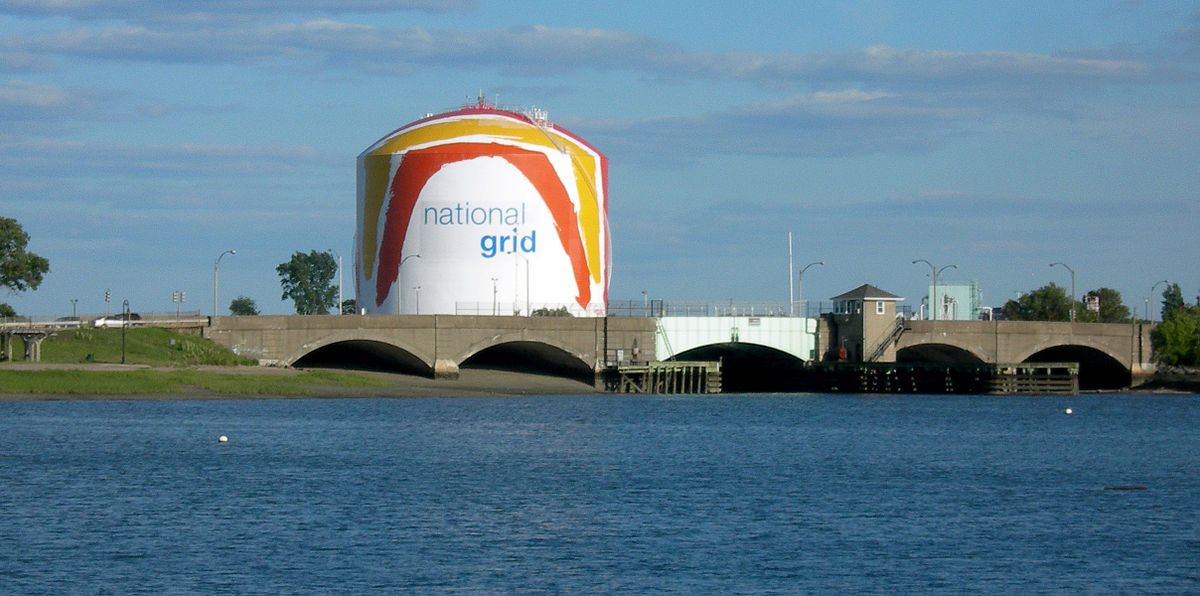February 22, 2023

A crumbling beam underneath the expressway. Bill Walczak photo
“An ounce of prevention is worth a pound of cure” is a Ben Franklin maxim advocated in public health. Preventing or finding and treating a disease before it emerges lessens pain and suffering and reduces health care costs. Prevention works, and that goes well beyond health care.
Here in Massachusetts, our transportation system is way past being able to have a prevention strategy. Our long-neglected public transit system, considered essential for the economic growth of our state, breaks down almost every day. As to our highways, drive around and you’ll find that nearly every bridge is heavily rusted.
Especially scary to me was a trip one recent morning to the Star Market on Morrissey Boulevard. The sun lit up the underside of the adjacent Southeast Expressway, where the edges of most of the beams are heavily rusted, and holes are visible in some. Every day, nearly 80,000 vehicles, including hundreds of 18-wheelers, use this roadway that sits directly above the tracks of the Red Line and the commuter rail line to the South Shore.
The 2021 Report Card for America’s Infrastructure noted that 9 percent of Massachusetts’ bridges were “structurally deficient,” but the expressway, which runs through Dorchester, did not make the list. I can’t imagine how bad a bridge must be to be considered “structurally deficient.”
But somehow, the state’s Department of Transportation has a plan to spend $122 million to replace the drawbridge on Morrissey Boulevard that serves 160 pleasure boats associated with the Dorchester Yacht Club. The cost of the proposed replacement averages to $762,500 per boat — quite a subsidy for the yacht club’s boat owners.

According to the state Department of Transportation, the Beades Bridge (pictured above) opened 702 times in 2022 to let boats exit or enter the Dorchester Bay Basin, also known as Savin Hill Bay, at a cost to the state of $116,480 for staff and operations. The drawbridge can be used by boats any day of the year, though during certain times of the year, use requires advance notice after midnight, and from October 15 through April 15, 24 hours’ notice is required for it to be opened.
I’m told that the drawbridge is necessary because the basin below is considered a “navigable waterway,” which is defined as “waters that are subject to the ebb and flow of the tide and/or are presently used, or have been used in the past, or may be susceptible for use to transport interstate or foreign commerce.” It’s true that the bay used to go over to Freeport Street, and that there used to be authentic commercial uses of the waterway, but the building of Morrissey Boulevard and the Southeast Expressway ended that.
Wouldn’t it be a lot cheaper – and more responsible to taxpayers – to move the yacht club to the other side of Morrissey Boulevard? Neighbors without boats are concerned that the bay will silt up if there is no yacht club there, but couldn’t this problem be solved comprehensively as part of the plan to raise Morrissey Boulevard as a buffer against frequent flooding?
It’s difficult to have any confidence in those responsible for maintaining our transportation infrastructure when much of it has been neglected for decades. The sides of the roads are filthy, and our public transit system continues to be a disaster, but we can find $122 million for 160 pleasure boats.
But it’s not just the Department of Transportation that’s at fault. Our Legislature and our governors do not seem to care about long-term investment in infrastructure. When they had surplus money last summer, they gave it away rather than invest it in long-term needs. Why do we have to wait for a crisis to deal with things essential to our Commonwealth’s success?
The recently passed millionaire’s tax was a cry for prevention investment to deal with long term problems. Let’s hope our leaders get the message.
Bill Walczak is a Dorchester resident and former president/CEO of Codman Square Health Center.


